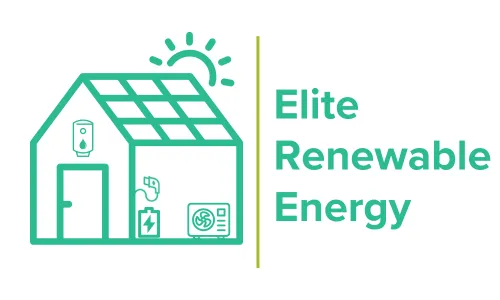Heat Pumps & Hot Water Systems
Save energy and stay comfortable all year round
Heat Pumps & Hot Water Systems
Save energy and stay comfortable all year round
Benefits of Heat Pumps

Lower Energy Bills

Environmentally Friendly

Government Grant Eligble
How Heat Pumps Work
An air source heat pump (ASHP) is a highly efficient system that uses outside air to provide heating and hot water to homes. The technology works similarly to a refrigerator, but in reverse. Here's how it works in more detail:
Absorbing Heat: The heat pump contains a refrigerant fluid that absorbs heat from the outside air, even in cold temperatures. The refrigerant is a fluid that changes from liquid to gas at low temperatures, allowing it to absorb and carry heat effectively.
Compressing and Heating: The refrigerant gas is then compressed, which raises its temperature significantly.
Releasing Heat: The hot, compressed refrigerant is passed through a heat exchanger, where it releases heat into a heating system or directly into the home’s radiators or underfloor heating. This heat is transferred into the home, warming it up.
Returning and Repeating: The refrigerant cools and condenses back into a liquid, ready to absorb more heat from the air, and the cycle repeats.
Air source heat pumps can produce heat at much lower temperatures than a fossil fuel boiler, making them ideal for modern, well-insulated homes. With the correct design and consideration of the existing pipe work and heat emitters, heat pumps can be suitable for most homes. It just means that the installer may have to upgrade some pipe work and radiators.
Benefits of Replacing a Fossil Fuel Boiler with a Heat Pump
Lower Carbon Footprint: Heat pumps use electricity rather than burning fossil fuels like gas or oil. If powered by renewable electricity, an air source heat pump can significantly reduce carbon emissions, contributing to the UK's net-zero goals.
Lower Running Costs: While the upfront cost of an air source heat pump can be higher than a gas boiler, the running costs are usually lower. Heat pumps are more energy-efficient, converting a small amount of electricity into a large amount of heat (typically 3-4 times more heat energy than electricity consumed). This leads to lower overall energy bills when compared to running a gas boiler.
Reduced Reliance on Fossil Fuels: Replacing fossil fuel-based heating systems with renewable energy solutions helps reduce the UK’s reliance on natural gas, making homes less vulnerable to fluctuations in energy prices and increasing energy security.
Eligibility for Grants and Incentives: The UK government offers financial incentives such as the Boiler Upgrade Scheme (BUS) to encourage homeowners to install low-carbon technologies like air source heat pumps, which can help offset the initial installation cost.
Low Maintenance: Heat pumps generally have lower maintenance costs compared to traditional boilers, as there are fewer moving parts, and no need to deal with gas or oil deliveries.
Cost Comparisons: Mains Gas vs. Electricity. When considering a heat pump, it’s important to compare the cost of mains gas and electricity for heating:
Mains Gas: The average cost of mains gas in the UK has historically been cheaper than electricity for heating. However, gas prices have become volatile, and the UK’s long-term goal is to phase out fossil fuels, making gas heating less sustainable.
Electricity: Electricity prices have been rising, but the efficiency of a heat pump makes it an attractive option, especially when powered by renewable energy sources (e.g., solar power). With a heat pump, for every 1kWh of electricity used, 3-4kWh of heat can be produced, significantly improving efficiency compared to a direct electrical heating system.
Common Fears about Heat Pump Technology. Many homeowners may have concerns about installing air source heat pumps. Here are some common fears and how they can be addressed:
Fear of High Upfront Costs: The initial installation of an air source heat pump can be more expensive than a traditional gas boiler. However, government grants and the long-term savings on energy bills can make it a more economical choice in the long run.
Noise: Some people worry about the noise of the external unit. Modern heat pumps are quieter than older models, and if correctly installed in a suitable location, noise should not be an issue. Professional installation ensures that the unit is placed in a location where it won’t disturb the household or neighbours.
Ineffective in Cold Weather: Heat pumps are designed to work efficiently even in temperatures as low as -15°C. While their efficiency can drop in extreme cold, they still provide heating in the UK climate, and in the rare instances of severe cold, supplementary heaters inside the unit will compensate for these short periods.
Incompatibility with Existing Heating Systems: Some homeowners worry that their existing radiators or underfloor heating systems won’t work with a heat pump. In most cases, heat pumps work best with low-temperature systems like underfloor heating. However, if upgrading to larger radiators is required, this can be factored into the installation plan.
Space Requirements: There can be concerns about the space needed for the outside unit. A well-designed installation will consider factors like location, airflow, and aesthetics to ensure the heat pump fits into the space without issues.
Processes Involved in Design and Installation
Site Survey and Design: A professional installer will conduct a thorough site survey to understand the property’s heating requirements. This involves looking at factors like the size of the property, insulation, the number of rooms, and current heating systems. They will calculate the heat load (how much heat is needed to maintain a comfortable temperature in the home) and design a system that suits your specific needs.
Selection of Equipment: Based on the survey, the installer will select the appropriate heat pump system, ensuring it meets the required heat output and efficiency levels for your home. Installation of Internal and External Units: The external heat pump unit will be placed in an optimal location, typically on the side or back of the property. The internal components, such as the hot water tank and controls, will be connected to the existing heating system. Installation typically takes 1-3 days, depending on the complexity of the system.
Integration with Existing Systems: If replacing an old boiler, the heat pump will need to be integrated with the home’s existing distribution system. This may involve adjusting pipe work, changing radiators or installing underfloor heating to accommodate the more desirable lower water temperatures. Heat pumps can operate at higher flow temperatures but it just means they are less efficient. Still much more efficient than boilers however, so our surveyor will explain the options available. Ideally any heating system, fossil fuel or renewables, should be designed to operate at a maximum flow temperature of 55 degrees C. This is in the current building regulations.
Testing and Commissioning: Once the system is installed, it will be tested to ensure it is working efficiently. This involves checking the flow rates, temperatures, and ensuring the heat pump operates within the expected performance parameters.
Ongoing Maintenance: Though heat pumps require less maintenance than fossil fuel systems, periodic checks are advised to ensure everything is running smoothly. This can include cleaning filters and checking refrigerant levels.
Air source heat pumps offer an efficient, sustainable alternative to fossil fuel boilers, with the potential for lower heating bills and reduced carbon footprints. While there may be concerns about cost, noise, or performance, these are largely mitigated with proper installation and system design. With the right system in place, homeowners can enjoy a long-term, energy-efficient heating solution.
// WORKING PROCESS
Our 4 Step Solution
01...
Get In Touch:
Simply call us or complete the contact form above. We love to chat and happy to discuss your ideas informally over the phone if you don't need a survey.
02...
Survey Carried Out:
If you really want to get under the skin of your project we need to visit. Our friendly and knowledgeable surveyors will provide all the answers on the day and will send you a written report with our conclusions. We like tea or coffee and a biscuit or two is even better.
03...
Quote:
Our quotation will provide all the information that you need on the systems that we are proposing. Giving you the data on the performance you can expect, the likely return on your investment and the cost of the solution. This will provide you with all you need to decide on the economic viability of the investment and the benefits it will provide.
04...
Installation & Aftercare:
Once you have accepted our quotation we will book the work in with you and carefully plan your installation. When we have carried out the work, our ongoing support and maintenance services will give you the utmost peace of mind and reassurance that you have made a sound investment.
Servicing Dorset, Hampshire and Wiltshire
Our Work
Get Your Quote Today
Contact us today
Copyright 2024 Elite Renewables - all rights reserved
Elite Renewables is a trading name of Elite Renewable Energy Ltd
Elite Renewable Energy Ltd is registered as a limited company in England & Wales under company number 16090413 Registered Address: Tudor Lodge, 22 Chewton Farm Road, Highcliffe, BH23 5QN
